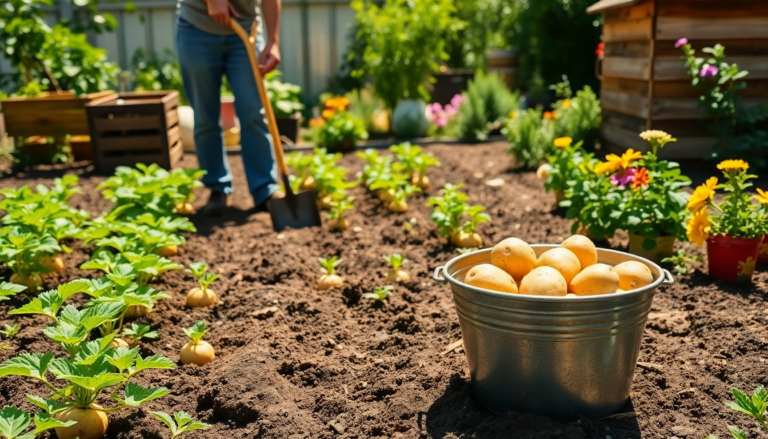Argomenti trattati
Growing potatoes can be an enchanting experience, transforming any garden or patio container into a mini farm that yields delightful surprises. These nutrient-dense tubers not only provide a satisfying harvest but also bring a sense of accomplishment to home gardeners. Whether you’re dreaming of fluffy mashed potatoes or crispy fries, cultivating your own potatoes is more accessible than you might imagine. Ready to dig in?
Getting Started with Potato Cultivation
The potato, scientifically known as Solanum tuberosum, belongs to the Solanaceae family, which also includes favorites like tomatoes and peppers. Potatoes thrive in full sunlight, requiring at least six to eight hours of direct exposure daily. They prefer loose, well-drained soil rich in organic matter, which allows their underground tubers to expand freely. Generally, potatoes are grown from what’s known as ‘seed potatoes’—small tubers that can be certified disease-free or even leftover ones from your kitchen that have begun to sprout. How easy is that?
To kick off your potato-growing journey, plant these seed potatoes in early spring, just a few weeks before the last frost. If you have larger tubers, you can cut them into chunks, making sure each piece has at least one or two eyes. Let the cut surfaces callus for a day or two to prevent rot before planting. Position them about three to four inches deep, spaced 12 inches apart, in rows or containers. It’s like setting the stage for your very own potato performance!
As your potato plants grow, it’s essential to ‘hill’ them by mounding soil around their base. This not only protects the developing tubers from sunlight—which can turn them green and bitter—but also encourages a more substantial yield. Remember, a well-drained, loamy soil is crucial to prevent oddly shaped tubers that result from compacted or rocky conditions. Who doesn’t want perfect potatoes?
Optimal Care for Your Potatoes
Just like data tells a compelling story in marketing, understanding your potato plants’ needs will lead to a fruitful harvest. Potatoes require consistent moisture, so keep the soil evenly moist throughout the growing season. But don’t go overboard—soggy soil can lead to rot. A deep watering once or twice a week usually does the trick, especially during the flowering stage when tubers are forming. Do you see how attention to detail pays off?
These plants are quite hungry and benefit from a mix of compost or balanced fertilizer at planting. A second feeding halfway through the growing season can give them a boost, particularly if your soil is lighter or sandy. Keep an eye out for pests like aphids and Colorado potato beetles, and be proactive in managing them to protect your plants. It’s all about staying one step ahead!
Fungal diseases, such as early and late blight, can pose threats during humid conditions. To mitigate these risks, avoid overhead watering and rotate your crops yearly to prevent planting potatoes in the same spot two seasons in a row. After all, variety is the spice of life, right?
Harvesting and Storing Your Potatoes
The excitement of harvesting potatoes parallels the thrill of analyzing campaign performance in marketing—it’s all about timing and technique. You can start harvesting small, tender ‘new potatoes’ just two to three weeks after the plants flower. These are perfect for light cooking methods like steaming or roasting. How great is it to enjoy fresh produce straight from your garden?
If you’re aiming for full-sized potatoes, wait until the plant foliage has completely died back, which typically happens between 90 to 120 days after planting. Carefully dig around the base of the plants with a garden fork, being cautious not to damage the tubers. Once harvested, let your potatoes dry in a cool, dark, and well-ventilated area. Remember, it’s crucial not to wash them before storing; just brush off the excess soil to keep them fresh.
As with all gardening endeavors, keep in mind that certain parts of the potato plant can be toxic, particularly the green portions. It’s important to keep pets and young children away from the plants and educate them about the potential dangers of consuming green or sprouted potatoes. Safety first!
Conclusion
In conclusion, growing your own potatoes is a rewarding endeavor that requires patience and care but yields delicious results. By understanding their needs and following best practices in cultivation and harvesting, you can enjoy the fruits of your labor while contributing to a more sustainable lifestyle. So grab your seeds, find that sunny spot in your garden, and embark on the delightful journey of potato cultivation. Are you ready to dig into this new adventure?

